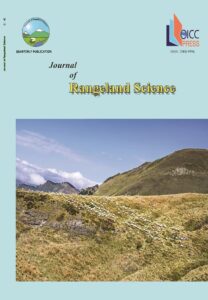Spatio-Temporal Assessment of Meteorological Droughts Effect on Vegetation Droughts in Khorasan Razavi Province, Iran
Authors
- Pouyan Dehghan Rahimabadi 1
- Sahar Nasabpour Molaei 1
- Esmail Heydari Alamdarloo 2
- Setareh Bagheri 1
- Hossein Azarnivand 3
Abstract
Vegetation cover is one of the living components of terrestrial ecosystems and plays an important role in many ecosystem processes that are strongly influenced by climatic events. Thus, meteorological droughts can significantly affect the vegetation cover, especially in arid and semi-arid regions where vegetation is more sensitive to environmental conditions. This study was conducted with the aim of analyzing the effects of meteorological droughts on the vegetation cover in different Land Use Land Cover (LULC) types in Khorasan Razavi province, Iran. For this purpose, the correlation and Linear Regression (LR) between Standardized Vegetation Index (SVI) and meteorological drought indices including Precipitation Evapotranspiration Index (SPEI) and Standardized Precipitation Index (SPI), with 3, 6 and 12-month time scales, were investigated for the period of 2001-2020. Based on the results, it was found that SVI values were negative in the years 2001, 2006, 2008, 2011, 2014 and 2015, in all LULC types, while in 2010, moderate rangeland experienced the most severe drought. The decreasing trend of SVI (increasing vegetation drought) was mostly observed in the southern parts of the province. The correlation between SVI and 6-month SPEI occupied a wider area than the other time scales (23.07%). The highest correlation between SVI and 12-month SPI was distinguished in dense forest, sparse forest, and poor rangeland, and occupied a wider area across the province (24.08%). Moreover, the highest (1.13) and lowest (0.75) changes in the regression coefficient of variations of SVI with multitemporal SPEI and SPI were belonged to moderate forest and agricultural land, respectively. Based on the results of this study, SPEI and SPI showed completely different values in various LULC types. Therefore, any types of indicators should be separately considered to study the terrestrial ecosystems in order to better identify areas affected by meteorological drought.


